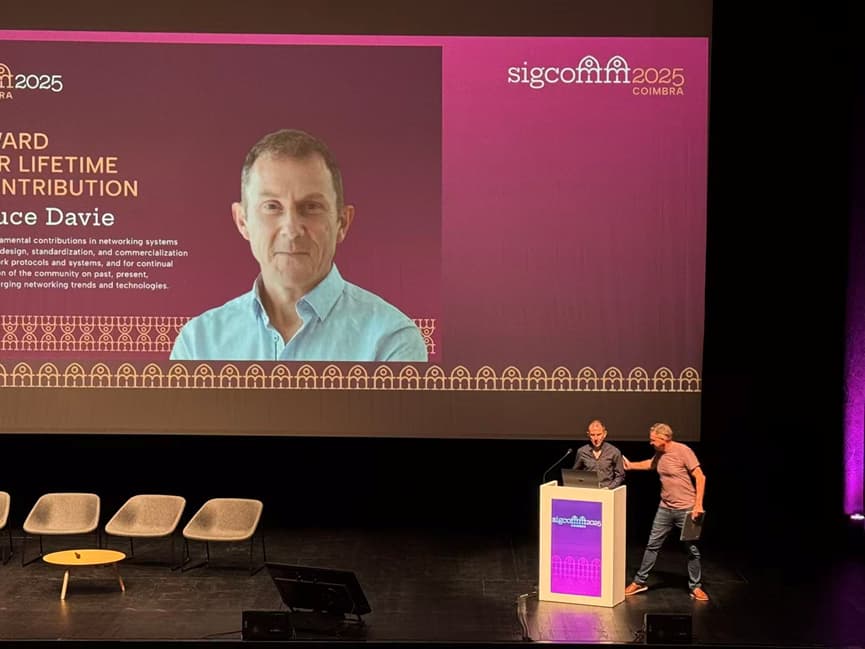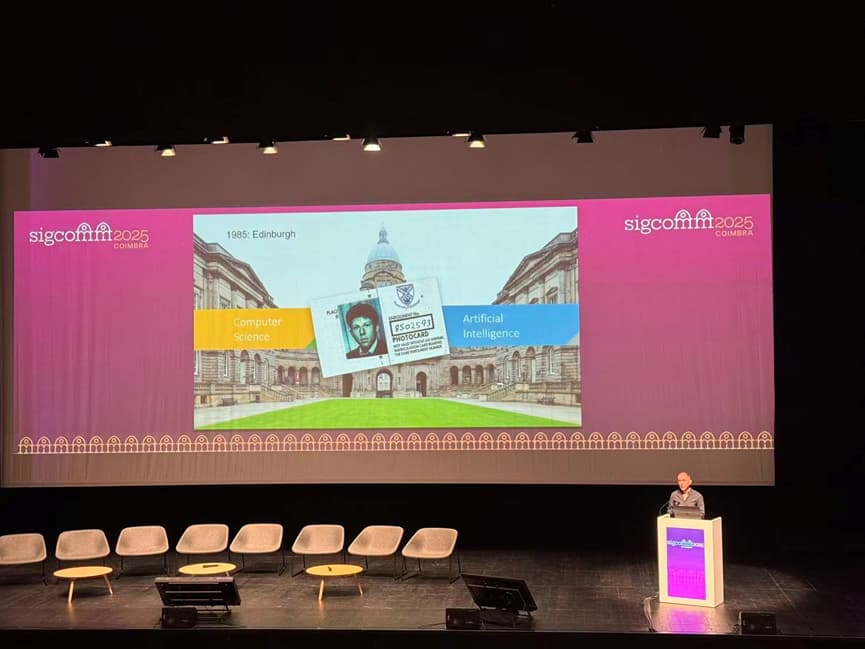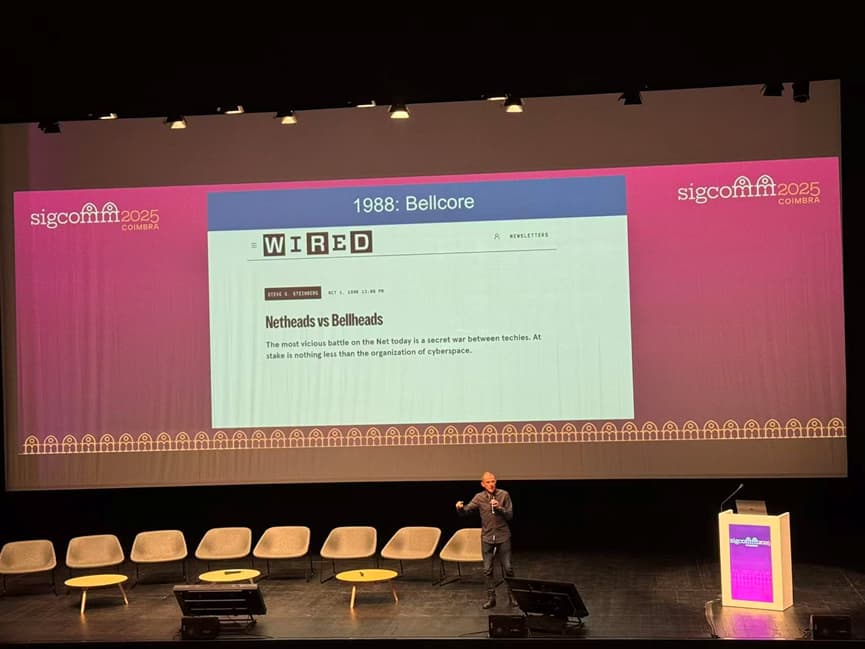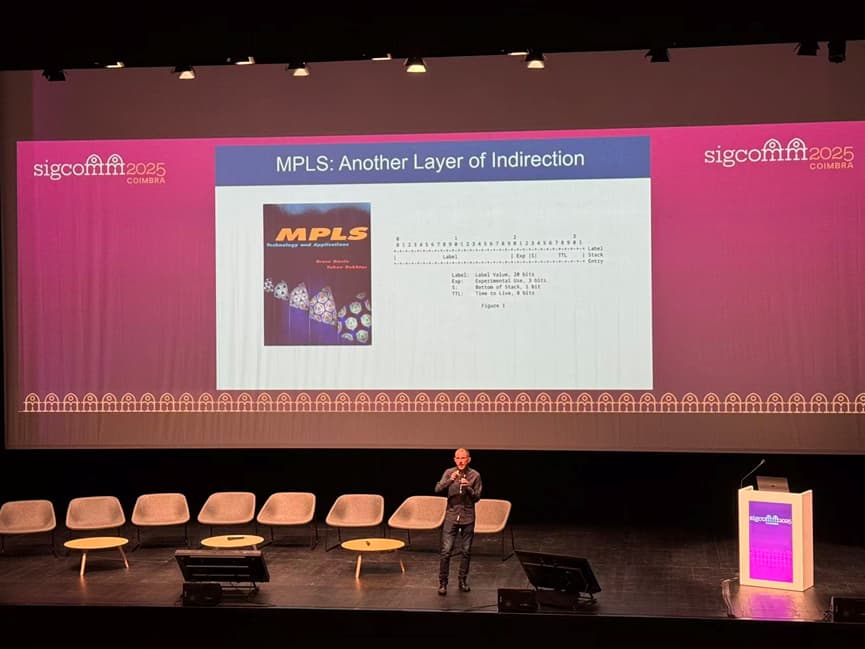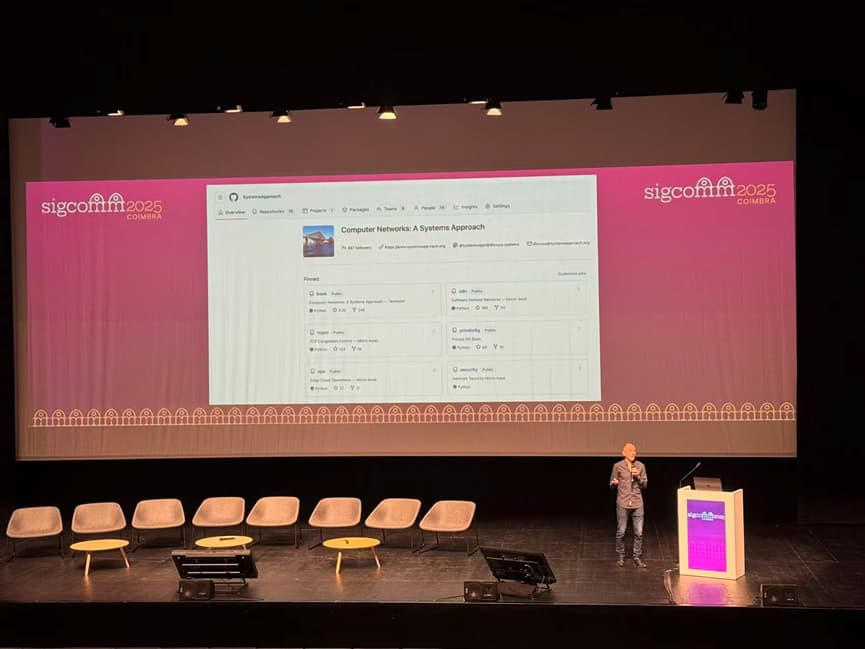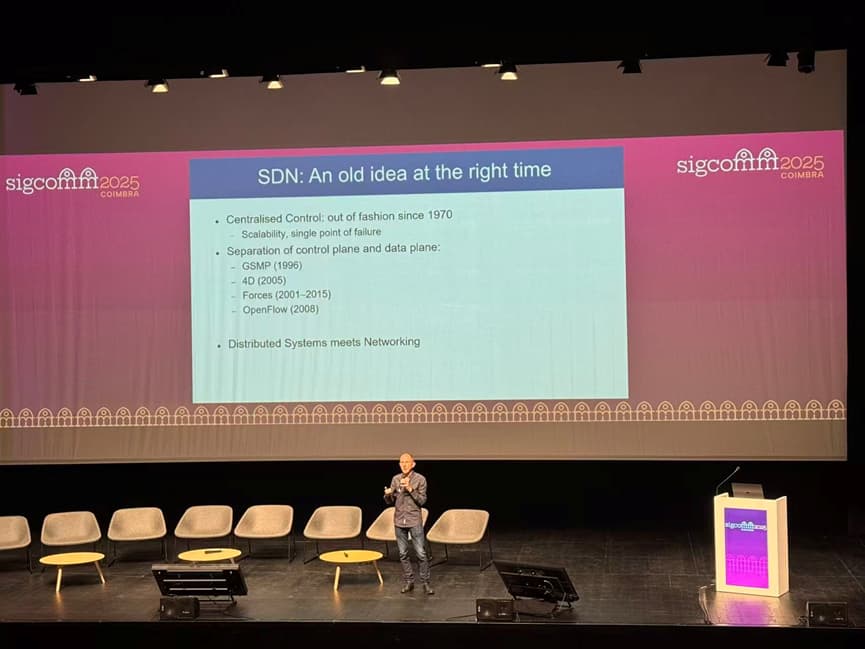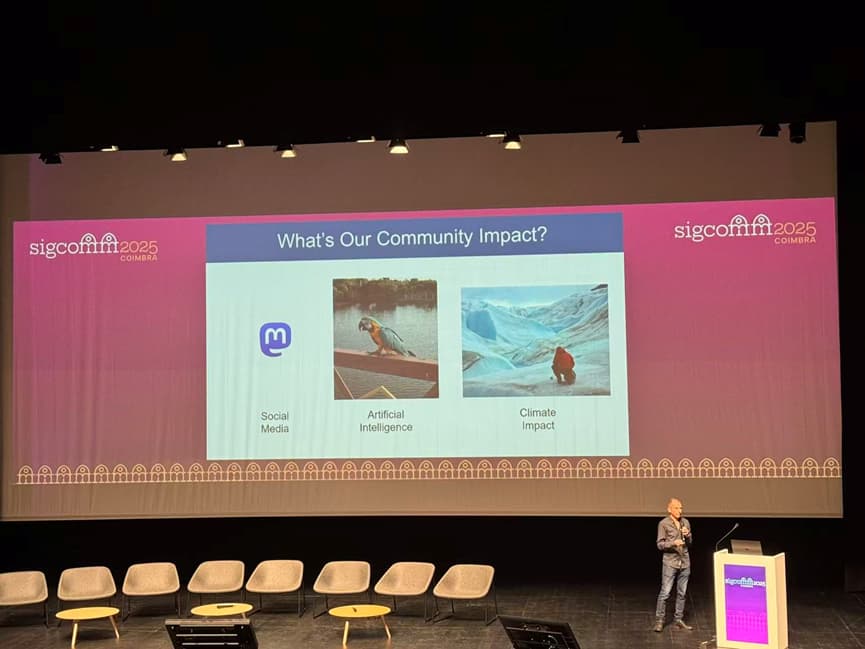Title : Water Under The Bridges
Speaker : Bruce Davie (Systems Approach LLC)
Scribe : Xing Fang (Xiamen University)
Introduction
At SIGCOMM 2025, Bruce Davie received the SIGCOMM Lifetime Achievement Award and delivered a keynote titled “Water Under the Bridges.” He used the metaphor of a bridge to capture his more than thirty years of experience across academia and industry, reflecting on how to create and measure real impact. By “bridges,” he refers to linking research and practice, theory and deployment, and passing knowledge to future generations. Davie emphasized that research impact cannot be measured only by paper counts or H-index. Instead, long-term influence is built through system innovation, team collaboration, education, open knowledge sharing, and social responsibility. His career spans several technological eras—from early AI and operating systems, to MPLS that underpins today’s global Internet, to software-defined networking (SDN) and large-scale cloud systems—illustrating how deep technical expertise can translate into lasting global impact.
From Academia to Industry: A Passion for System Building
In 1985, Davie entered the University of Edinburgh for his PhD intending to study AI, but on his advisor’s suggestion shifted to computer science, thereby avoiding the AI downturn of the early 1990s. He soon realized that his real interest lay in building real systems and writing enduring knowledge rather than purely theoretical pursuits.
In 1988, he joined Bellcore, where under the guidance of David Clark and other pioneers he worked on integrating ATM and IP, gaining invaluable experience at the intersection of theory and engineering and forming the core idea of “building bridges across domains.”
In 1995, Davie joined Cisco and, with Yakov Rekhter and Eric Rosen, co-invented and promoted Multiprotocol Label Switching (MPLS). By introducing label abstraction to replace pure IP lookup, MPLS enabled flexible traffic engineering and scalable VPN services. Though initially overlooked by academia for being “too simple,” MPLS quickly became a fundamental technology for carrier backbones because of its practicality and scalability.
Davie highlighted that MPLS’s significance lies not in faster forwarding, but in providing a long-lived architectural foundation for large-scale, evolving networks.
Teaching and Open Knowledge
In 2007, Davie joined MIT to teach graduate networking courses together with Hari Balakrishnan and Dina Katabi. He focused on teaching system principles and abstraction instead of rote memorization of the OSI layers, helping students reason about future network challenges beyond current protocol stacks.
In 2012, after a serious cycling accident, he turned a personal challenge into an opportunity to expand access to knowledge. Together with Larry Peterson, he made the classic textbook Computer Networks: A Systems Approach fully open source and built a collaborative GitHub platform. This not only kept the book up to date with fast-evolving technology but also created a global community for continuous improvement, ensuring that the material remains a living resource for students and educators worldwide.
Expanding Boundaries: SDN and Cloud Networking
Also in 2012, Davie joined the SDN startup Nicira (later acquired by VMware), marking another major shift in his career. He led efforts to separate the control plane from the data plane and to bring network virtualization into cloud computing. He helped introduce micro-segmentation and zero-trust security mechanisms that addressed the needs of automation and large-scale isolation.
He stressed that the success of SDN came not from a single invention but from a system-level combination of technologies—distributed consensus, high-speed tunneling, efficient virtual switching, and declarative control frameworks—integrated with clear product direction and strong teamwork to enable practical deployment and long-term growth.
Redefining Impact
Throughout the keynote, Davie repeatedly discussed how to measure impact in networking research and engineering. He compared H-index to running mileage or VO₂max—useful but insufficient to predict race performance. True impact, he argued, comes from building widely deployed systems, mentoring teams, sharing knowledge openly, and providing long-term service to the research and industrial community. Reflecting on his moves from Bellcore to Cisco to Nicira, he explained that each career decision was driven by alignment with a strong mission and a trusted team rather than short-term titles or compensation. He encouraged young researchers to go deep in their fields but also to take cross-disciplinary risks and seize opportunities that create durable societal value.
Looking Forward
Davie concluded with three calls for the future. First, promote decentralized social media, such as Mastodon, to reduce information concentration and preserve the open spirit of the Internet. Second, approach artificial intelligence with rational optimism: AI is a powerful tool but not a magic solution, and students should learn to use it responsibly. Third, take climate change and sustainability seriously. From academic travel to data center operations, he urged the community to cut carbon emissions through remote and hybrid conferences and energy-efficient network design.
Questions and Answers
-
Q1: Have you ever participated in an Ironman triathlon?
A1: No. He explained that while he has completed many marathons and long-distance cycling events, he has not pursued Ironman competitions. He noted that professional choices, like endurance sports, require weighing long-term sustainability and personal interests, not just the pursuit of extreme challenges. -
Q2: How do you decide when a career transition is worthwhile?
A2: He emphasized evaluating the mission and the team. Each of his own transitions—from Bellcore to Cisco to Nicira—was made only after confirming that the new team provided opportunities to realize technical ideals and shared his values, rather than for salary or title alone. -
Q3: How should networking education adapt to today’s complex Internet?
A3: Focus on core principles and system abstraction instead of memorizing the OSI layers. By grasping the invariants of network design, students can maintain independent analytical and system-building abilities as technology evolves. -
Q4: What advice do you have for students during the current AI boom?
A4: Treat AI as a valuable but fast-changing tool. Students should build long-lasting skills—such as strong foundations in systems and networking, critical thinking, and the ability to solve real problems—while learning to use AI judiciously rather than following trends blindly. -
Q5: How do you view the role of communication skills in research and career development?
A5: Communication is both essential and learnable. Researchers must be able to present designs clearly to teams, customers, and the broader community, and to incorporate feedback effectively. Strong writing and speaking skills greatly amplify the impact of technical innovations.
Personal Thoughts
This keynote is both a personal career summary and a message to the networking research community. What impressed me most is Davie’s emphasis on communication. Technical breakthroughs alone cannot achieve lasting influence if their importance is not clearly conveyed and understood. Communication is more than transferring information—it enables ideas to spread, fosters collaboration, and helps innovations be adopted. For young researchers, building strong systems and solid theory is crucial, but cultivating clear expression and effective dissemination is equally vital to achieving long-term academic and societal impact.
